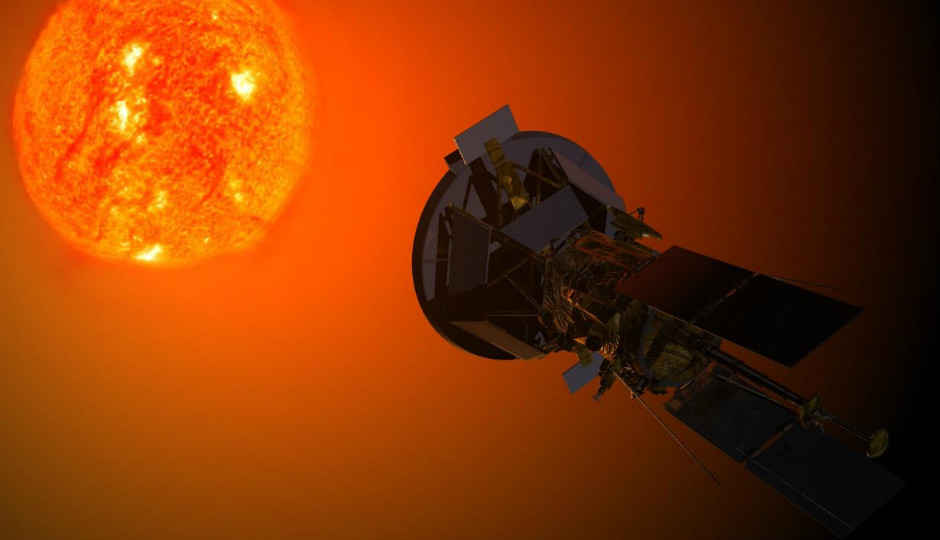 A little over a month into its seven-year-long mission, NASA’s Sun-bound spacecraft, the Parker Solar Probe, has sent back its first-light data from each of its four instrument suites, reports NASA. The space agency says that while the data collected shows no examples of key science observations just yet, it does show that the instruments are working well. All of them are designed to work in conjunction to measure the Sun’s electric and magnetic fields, particles from the star, and solar wind. Apart from this, the instruments are also designed to capture images of the environment around the spacecraft. “All instruments returned data that not only serves for calibration, but also captures glimpses of what we expect them to measure near the Sun to solve the mysteries of the solar atmosphere, the corona,” commented Nour Raouafi, a scientist in the Parker Solar Probe project at the John Hopkins University’s Applied Physics Lab in Maryland. Left image: taken through WISPR's outer telescope. Right image: taken through WISPR's inner telescope. According to NASA, this most recent image shows first-light data from the Parker Solar Probe’s WISPR (Wide-field Imager for Solar Probe) instrument suite. The right side of the image, which is captured with the WISPR’s inner telescope, has a 40-degree field of view, with its right edge 58.5 degrees from the Sun’s center. The bright object a little to the right of the image’s center is Jupiter, explains NASA. The left side of the image is captured through WISPR’s outer telescope. This has 58-degree field of view and extends to nearly 160 degrees from the Sun. According to the American space agency, it shows the Milky Way, showing the galactic center. NASA admits that there’s a 13-degree parallax in the apparent position of the Sun as viewed from Earth and from the Parker Space Probe. According to a blog post by the American space agency, the spacecraft’s first close approach to the Sun will take place in November 2018, but the instruments are already able to gather measurements of the solar wind closer to Earth. This first-light data captured now is an example of that. WISPR’s protective doors were initially shut during the launch to keep the instrument safe. The doors were later opened on September 9 to capture the first images on the way to the Sun. Inline image courtesy: NASA
A little over a month into its seven-year-long mission, NASA’s Sun-bound spacecraft, the Parker Solar Probe, has sent back its first-light data from each of its four instrument suites, reports NASA. The space agency says that while the data collected shows no examples of key science observations just yet, it does show that the instruments are working well. All of them are designed to work in conjunction to measure the Sun’s electric and magnetic fields, particles from the star, and solar wind. Apart from this, the instruments are also designed to capture images of the environment around the spacecraft. “All instruments returned data that not only serves for calibration, but also captures glimpses of what we expect them to measure near the Sun to solve the mysteries of the solar atmosphere, the corona,” commented Nour Raouafi, a scientist in the Parker Solar Probe project at the John Hopkins University’s Applied Physics Lab in Maryland. Left image: taken through WISPR's outer telescope. Right image: taken through WISPR's inner telescope. According to NASA, this most recent image shows first-light data from the Parker Solar Probe’s WISPR (Wide-field Imager for Solar Probe) instrument suite. The right side of the image, which is captured with the WISPR’s inner telescope, has a 40-degree field of view, with its right edge 58.5 degrees from the Sun’s center. The bright object a little to the right of the image’s center is Jupiter, explains NASA. The left side of the image is captured through WISPR’s outer telescope. This has 58-degree field of view and extends to nearly 160 degrees from the Sun. According to the American space agency, it shows the Milky Way, showing the galactic center. NASA admits that there’s a 13-degree parallax in the apparent position of the Sun as viewed from Earth and from the Parker Space Probe. According to a blog post by the American space agency, the spacecraft’s first close approach to the Sun will take place in November 2018, but the instruments are already able to gather measurements of the solar wind closer to Earth. This first-light data captured now is an example of that. WISPR’s protective doors were initially shut during the launch to keep the instrument safe. The doors were later opened on September 9 to capture the first images on the way to the Sun. Inline image courtesy: NASAfrom Latest Technology News https://ift.tt/2PU6fUn









